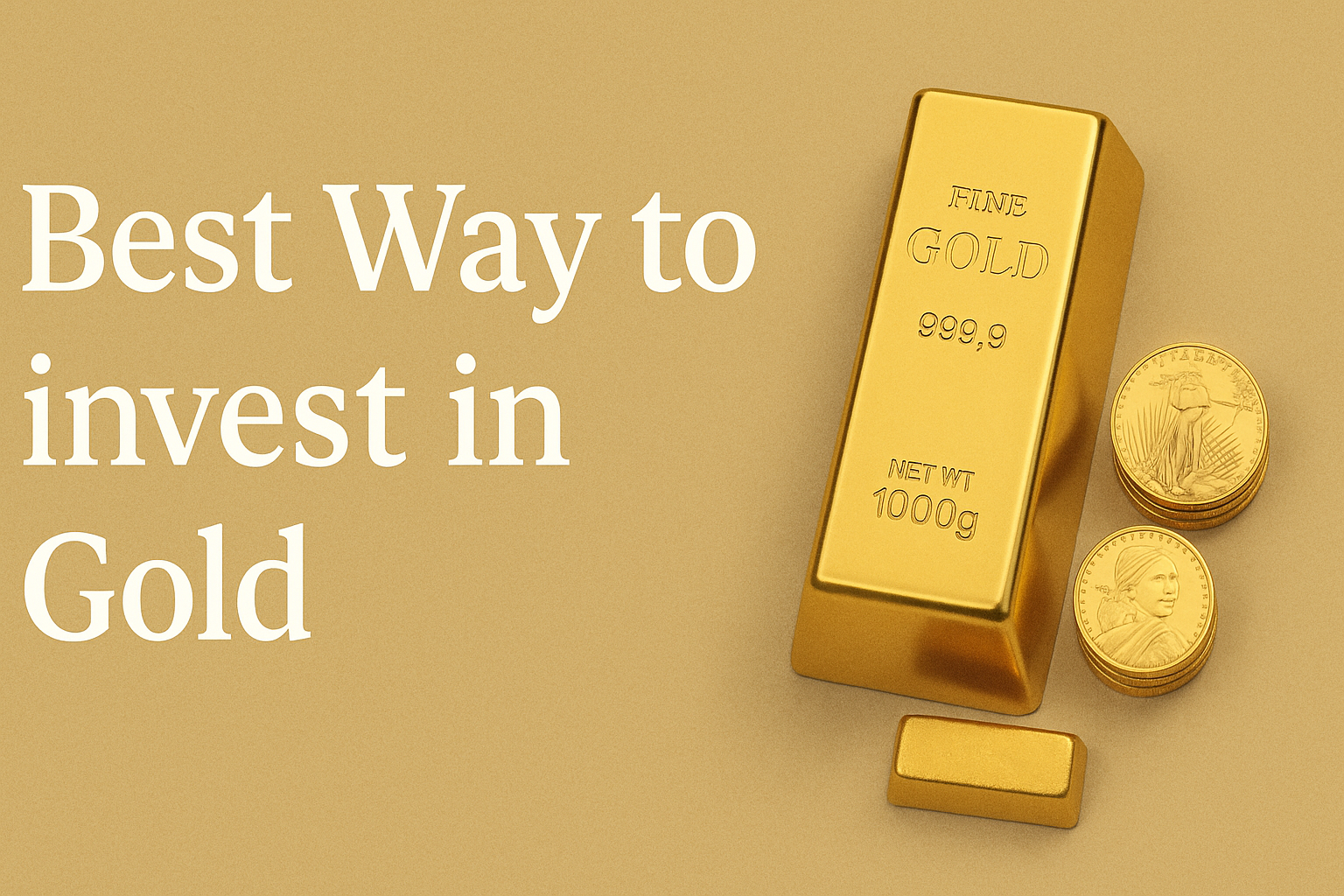Gold has held its allure for thousands of years. It’s been a symbol of wealth, a currency standard, and, more recently, a strategic investment asset. With economic uncertainties, inflation concerns, and fluctuating markets, many investors are once again turning to gold. But what is the best way to invest in gold today? Whether you’re a first-time buyer or a seasoned investor looking to diversify, this guide breaks down your options, the pros and cons of each, and how you can make gold a part of your financial strategy.
Why Invest in Gold?
Before diving into the how, let’s tackle the why. Gold is often seen as a “safe haven” asset. When the stock market dips or inflation rises, gold typically holds or even increases in value. It’s a hedge against uncertainty. Historically, gold has been a store of value and a protection against currency devaluation.

But it’s more than just tradition. Gold’s scarcity, universal appeal, and utility in technology and jewelry keep demand strong. So whether you’re looking to protect your wealth, diversify your portfolio, or even speculate, gold can be a solid addition.
The Main Ways to Invest in Gold
1. Physical Gold (Bars, Coins, and Jewelry)
This is the most tangible way to own gold. You can hold it, store it, and even wear it. Bullion bars and coins like American Eagles, Canadian Maple Leafs, or South African Krugerrands are popular choices.
Pros:
- Tangible asset
- No counterparty risk
- Full ownership
Cons:
- Storage and insurance costs
- Less liquid than digital or paper forms
- Risk of theft
How to Get Started: Buy from reputable dealers like APMEX, JM Bullion, or your local coin shop. Always verify authenticity and current market prices. If you’re unsure where to begin, start with a few small coins to get comfortable.
2. Gold ETFs (Exchange-Traded Funds)
ETFs are funds that trade like stocks but track the price of gold. Popular ones include SPDR Gold Shares (GLD) and iShares Gold Trust (IAU).
Pros:
- Highly liquid
- Easy to buy/sell through any brokerage
- No need for physical storage
Cons:
- Management fees (though usually low)
- You don’t actually own physical gold
How to Get Started: Open a brokerage account with firms like Fidelity, Charles Schwab, or Robinhood. Search for gold ETFs and review performance metrics and fees before purchasing.
3. Gold Mining Stocks and Mutual Funds
Rather than investing in gold directly, you can buy shares in companies that mine and produce gold. This includes major players like Barrick Gold, Newmont Corporation, and various junior mining firms.
Pros:
- Potential for higher returns
- Some offer dividends
Cons:
- Subject to company performance and market volatility
- Not a direct play on gold prices
How to Get Started: Invest via your brokerage platform. If you prefer mutual funds, look into gold-focused funds like Franklin Gold and Precious Metals Fund.
4. Digital Gold and Gold-Backed Cryptocurrencies
Some platforms now allow you to buy fractions of physical gold digitally. Others offer cryptocurrencies backed by gold, such as PAX Gold (PAXG).
Pros:
- Accessible and fractional
- Easy to trade
- Backed by physical assets
Cons:
- Requires trust in platform
- Newer, less regulated space
How to Get Started: Check out apps like Vaulted, OneGold, or Goldmoney. For gold-backed crypto, explore Coinbase or Binance for tokens like PAXG.
5. Gold Futures and Options
These are contracts to buy or sell gold at a specific price and date. Best for advanced investors who want to speculate on gold prices.
Pros:
- High leverage and potential gains
- Flexibility
Cons:
- Complex and risky
- Not suitable for beginners
How to Get Started: You’ll need a margin account and a solid understanding of derivatives. Platforms like TD Ameritrade and Interactive Brokers offer these products.
Factors to Consider Before You Invest
- Purpose: Are you investing for safety, profit, or diversification?
- Timeline: Gold is great for the long-term, but not always ideal for short-term gains.
- Risk Tolerance: Physical gold is less risky but lower yield; futures are higher risk with higher potential reward.
- Storage and Security: Physical gold needs safekeeping. Digital and ETF gold reduces this hassle.
- Costs and Fees: Always evaluate transaction fees, storage costs, and fund expense ratios.
How Much Gold Should Be in Your Portfolio?
Most financial experts suggest allocating 5% to 10% of your investment portfolio to gold or other precious metals. This gives you protection without overexposing your wealth to one asset class.
That said, your personal allocation might vary. If you’re in a volatile market or concerned about inflation, you might lean toward the higher end of the range.
Red Flags to Watch Out For
- Scams: Avoid sellers without credentials or clear pricing.
- Hidden Fees: Ask about shipping, storage, insurance, and commissions.
- Overhyping: If it sounds too good to be true, it probably is. Gold is a stable asset, not a get-rich-quick scheme.
Always do your due diligence. Look for transparent platforms, read reviews, and compare options.
Final Thoughts: What’s the Best Way to Invest in Gold?
There’s no one-size-fits-all answer. The best way to invest in gold depends on your goals, risk tolerance, and how hands-on you want to be.
- Want security and full control? Go physical.
- Prefer convenience and liquidity? Try ETFs.
- Looking for higher returns? Consider mining stocks.
- Curious about innovation? Digital gold might be your path.
In a diversified investment strategy, gold shines brightest when balanced with stocks, bonds, real estate, and even a dash of crypto. As the world changes, having a timeless asset like gold can offer peace of mind.
